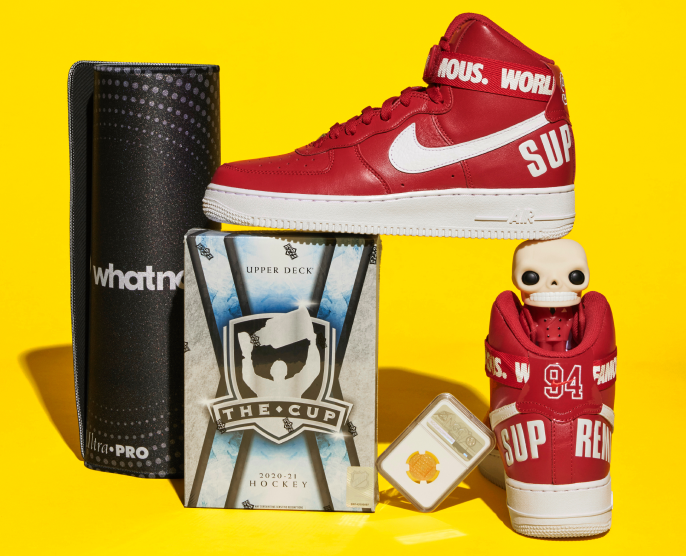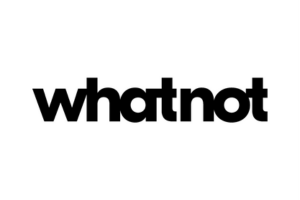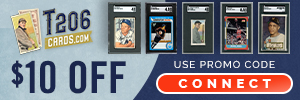
Refractor Mania: A History of Sports Card Refractors
Overview
Very few things in the hobby world achieve the same interest as Refractors. Sure, RPAs are popular and collectors will seek out low-numbered on-card autographs whenever possible, but something about those shiny colors and shapes drives the hobby wild. Not just an insert or a parallel card, Refractors have taken on a life of their own and are a constant that collectors can count on, year after year.
What Are Refractors?
Refractor cards, in the most simple terms, are cards that refract light. This rainbow-reflection coating shows a multitude of colors, especially in direct light, and has long been a collector favorite. In addition to being an eye-catching technology, these cards also signify a parallel that is rarer than regular base cards.
Although they are not impossible to pull, collectors only average a few Refractors per box. Refractor cards are fairly easy to spot in comparison to base cards but originally featured no other designation. However, it can be difficult to determine if a card is a Refractor based only on an image of the card front. Recent versions are normally noted as Refractors on the back or are serial numbered.
Early on in their history, Finest Refractors featured a protective coating and the debate still rages regarding whether the coating should be peeled. While the "Refractor" designation is synonymous with the Topps product line, the term has essentially been adopted as a generic title for almost any parallel card with a rainbow finish.
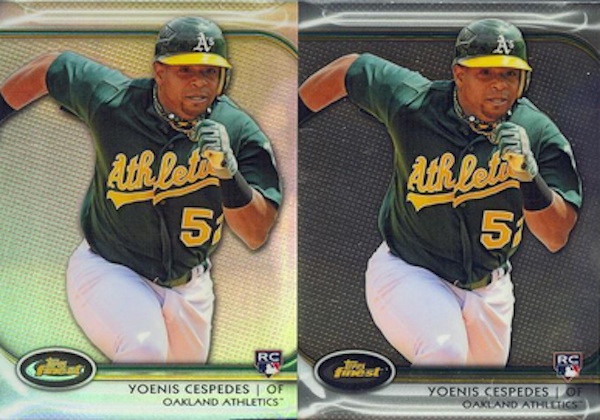
*The Refractor is on the left and the base card is on the right.
The Origins of Refractors
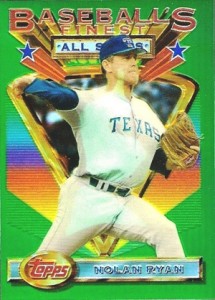
At a time when the overproduction of cards was in full-effect, collectors were looking for something new. Topps provided a glimpse into the future with the release of 1993 Finest Baseball. This set featured chromium base cards and was a huge hit. But Topps included something else in the product that may have shaped the hobby even more.
1993 Finest Baseball was the birthplace of Refractors. These limited cards were inserted approximately two per box (1:9 packs) and allegedly have a print run of 241. The product also included over 30 suspected Refractor short prints, which are believed to be even more limited than the other base Refractors.
The one big missing element in 1993 Finest Baseball is the lack of rookies. Rookie cards have always been one of the main driving forces behind the hobby. While this release helped expose collectors to Refractors, one product is not normally enough to immediately alter the direction of the hobby. Regardless, this is one of the sets that changed the game and has earned a special place in the history of the hobby.
The Growing Popularity of Refractors
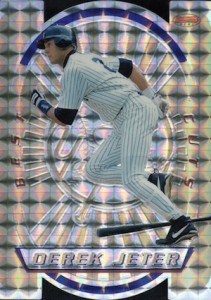 Although 1994 Finest Baseball also included Refractor parallels, Refractors had still not become the hobby staple that they are today. The next big release which caught the attention of collectors was 1995 Bowman's Best Baseball.
Although 1994 Finest Baseball also included Refractor parallels, Refractors had still not become the hobby staple that they are today. The next big release which caught the attention of collectors was 1995 Bowman's Best Baseball.
Like Finest, Bowman's Best included Refractor parallels as a popular insert. The key difference was that 1995 Bowman's Best also included a good rookie class with players such as Andruw Jones, Vladimir Guerrero, Scott Rolen, Chris Carpenter and Hideo Nomo. Additionally, the Refractors were noted as such on the card backs, making it easier for the average collector to identify the Refractors.
Bowman's Best also experimented with other Refractor versions. 1996 Bowman's Best produced Atomic Refractors. These bizarre parallels featured a design that resembled a hybrid plaid and Refractor combination. Atomic Refractors gave collectors a glimpse of the low-numbered Refractors that would soon become a cornerstone of the Topps lineup.
Not Just Baseball
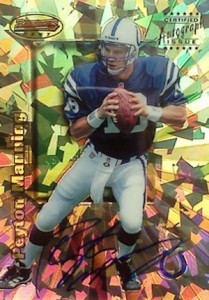 Finest Baseball was the birthplace. Bowman's Best Baseball showed that it could evolve and grow. But it took the transition into other sports to bring the Refractor phenomenon full-circle. Again, rookies helped that process along.
Finest Baseball was the birthplace. Bowman's Best Baseball showed that it could evolve and grow. But it took the transition into other sports to bring the Refractor phenomenon full-circle. Again, rookies helped that process along.
The 1996 NBA rookie class allowed for a perfect storm of Refractors which included 1996-97 Bowman's Best Basketball, 1996-97 Finest Basketball, and 1996-97 Topps Chrome Basketball. The crown jewel of the group was Topps Chome NBA. It combined limited Refractor parallels with popular names like Kobe Bryant, Allen Iverson, Steve Nash, Ray Allen and Stephon Marbury. The result is one of the most popular products of all-time. And due to the continued relevance of Bryant, Nash and Allen, high-graded versions of these cards still sell for huge amounts.
Not to be outdone, Football came into the picture in a big way in 1998. With a rookie class that included Peyton Manning and Randy Moss, collectors finally had elite NFL rookie Refractors to chase. In addition, autographed Refractor parallels first emerged in 1997 Bowman's Best Baseball, but one of the most popular early autographed Refractor cards came from Peyton Manning. Although not the first autographed Refractor, this Peyton Manning rookie card helped place autographed Refractors in high demand.
Here to Stay
1997 was the year it all came together. The inaugural edition of Bowman Chrome in 1997 combined all the popular attributes into one product. A deep rookie checklist, chromium base and Refractor parallels merged with ravenous baseball collectors and helped entrench Refractors as a hobby mainstay.
Other Topps brands have used Refractors with regularity, but Bowman Chrome has become arguably the top Refractor option for collectors based on its deep rookie and prospect checklists and strong brand recognition.
Chase the Refractor Rainbow
As Refractors continued their evolution, collectors demanded more, and a variety of Refractor versions were added to the lineup by Topps. In addition to base Refractors and Atomic Refractors, new parallels included X-fractors, a multitude of color Refractors, hobby and retail exclusive colors, and Superfractors. The newest Refractor parallels include pink in honor of Breast Cancer Awareness and camouflage in honor of the military.
This new era of cards gave way to the assembly of Refractor "rainbows" by collectors. The ultimate goal was to have the card of one player in as many different color Refractor parallels as possible, thus completing the rainbow. This can be particularly difficult with low-numbered versions and multiple collectors attempting to complete a rainbow for the same player.
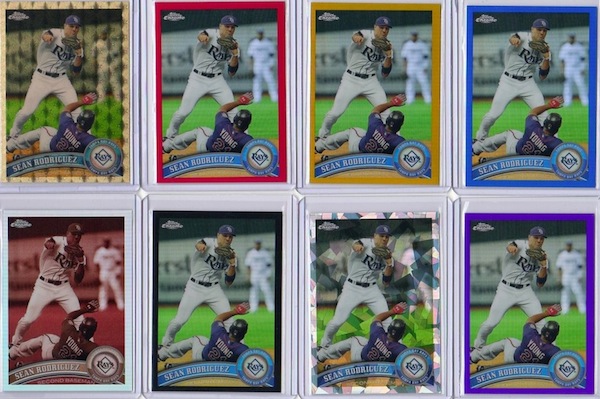
Top Refractors
With so many Refractor options, it might seem that collectors would not have a favorite. However, one color in particular has always been among the most popular versions. Collectors love gold. This is something that has been seen throughout the history of collecting. In addition, the Gold Refractors are usually numbered to 50, which is rare enough to produce big values, but there is enough supply so that they are not impossible to find.
Another option is aimed at Collectors who are looking for extreme rarity over all else. These one-of-one Superfractor cards have become the pinnacle of high-end card collecting. Huge sums of money are thrown around whenever one of these rare Refractors emerge. Examples include the Superfractor rookies for Yu Darvish, Stephen Strasburg, Bryce Harper, Robert Griffin III, and Andrew Luck.
Emerging Competition
Topps has used Refractor cards to build several popular products and also offer collectors something unique and valuable that almost no other card company could match. On a smaller scale, Leaf offered a competing Refractor concept but they did not approach the same level of respect or value as Topps Refractors. The best challenger appears to be Panini, who transitioned from their European sticker beginnings to become a major player in the sports and trading card industry.
2012-13 Prizm Basketball marked the first Refractor-like offering from Panini and it was well-received by collectors. In this product, the Refractors are officially referred to as Prizms, which can be confusing because that is also the name of the brand. That would be like Topps calling Bowman Chrome, Refractor Chrome. This rapid popularity encouraged Panini to quickly release NFL, MLBPA and NHL products under the Prizm flagship. Once again, Gold Prizms, this time numbered to 10, are the preferred parallel for collectors.

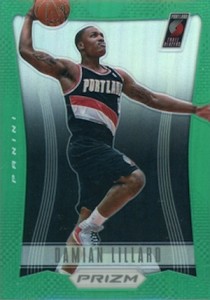
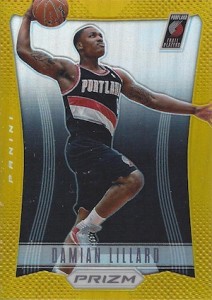
Rookie Rollercoaster
Like most things in the hobby world, products that featured a strong overall rookie class or a few hobby-elite rookie players, tended to emerge as the most revered Refractor-based sets. The best options for Refractor rookie collectors include Finest, Topps Chrome, Bowman Chrome, and Panini Prizm. The top rookie Refractor options from each of the big four professional sports are noted below by year of release.
Due to the inclusion of prospect and rookie cards, more hobby attention, and a longer average maturation process for players, the value of many products is not fully known until several years later. Prospecting is something that has emerged and Bowman Chrome is the product of choice for collectors to do that. Further complicating things is the prospect versus rookie card debate. As a result, more recent rookie players have a variety of cards that fall across multiple years and are touted as rookies. Basketball Refractors may produce higher prices for singles, but baseball Refractors will always remain the top overall option.
Key Baseball Rookie and Prospect Refractors
- 1997 - R.A. Dickey, Roy Halladay, Adrian Beltre, Lance Berkman
- 1999 - Matt Holiday, Josh Hamilton, C.C. Sabathia, Carl Crawford
- 2001 - Ichiro, Albert Pujols
- 2002 - Joe Mauer, David Wright
- 2004 - Justin Upton, Andrew McCutchen
- 2005 - Justin Verlander, Ryan Braun, Matt Kemp
- 2006 - Clayton Kershaw, Evan Longoria
- 2008 - Buster Posey
- 2009 - Mike Trout
- 2010 - Stephen Strasburg, Manny Machado, Matt Harvey
- 2011 - Bryce Harper, Matt Moore
- 2012 - Yu Darvish
- 2013 - Yasiel Puig
- 2014 - Kris Bryant, Jose Abreu
The NBA benefited greatly from Refractors and had many popular years. However, Topps lost their NBA license at the end of the 2009-10 season. Just in time for the 2012-13 season, which features a double-rookie class, Panini's Prizm line helped fill the Refractor void.
Key Basketball Rookie Refractors
- 1996-97 - Kobe Bryant, Allen Iverson, Steve Nash, Ray Allen
- 2003-04 - LeBron James, Dwyane Wade, Chris Bosh, Carmelo Anthony
- 2004-05 - Dwight Howard
- 2005-06 - Deron Williams, Chris Paul
- 2007-08 - Kevin Durant
- 2008-09 - Derrick Rose, Russell Westbrook, Kevin Love
- 2009-10 - Blake Griffin, James Harden, Steph Curry, Jrue Holiday, Ricky Rubio
- 2012-13 - (double-rookie year) Kyrie Irving, Anthony Davis, Damian Lillard, Harrison Barnes
- 2013-14 - Michael Carter-Williams, Victor Oladipo, Trey Burke, Giannis Antetokounmpo
Like the NBA, the NFL also has enjoyed some strong rookie classes during the Refractor years. The culmination may have been the 2012 season, which saw a strong influx of rookie talent and the football world went crazy. With Panini holding the NFLPA exclusive, the Topps Refractor era in football cards ended in 2015. This leaves Prizms as the only Refractor option for NFL collectors.
Key Football Rookie Refractors
- 1998 - Peyton Manning, Randy Moss
- 2000 - Tom Brady
- 2003 - Eli Manning, Ben Roethlisberger, Larry Fitzgerald
- 2005 - Aaron Rodgers
- 2007 - Adrian Peterson, Calvin Johnson
- 2011 - Cam Newton, AJ Green, Julio Jones
- 2012 - Andrew Luck, Robert Griffin III, Russell Wilson, Doug Martin, Trent Richardson, Alfred Morris
- 2013 - Giovani Bernard, Eddie Lacy, Le'Veon Bell, Cordarrelle Patterson, EJ Manuel, Keenan Allen
- 2014 - Johnny Manziel, Sammy Watkins, Kelvin Benjamin, Blake Bortles, Teddy Bridgewater, Derek Carr
The NHL did not enjoy the same success as other leagues with the Refractor phenomenon. This is because Topps stopped making hockey cards after the 2003-04 season. As a result, many of the top NHL players today do not have Refractor cards available. Panini recently announced it would release a Prizm Hockey subset in 2012-13 Rookie Anthology Hockey. Given the double rookie class in 2013-14 hockey products, it was an ideal time for Refractor-like cards to make their appearance in the standalone 2013-14 Prizm Hockey.
Key Hockey Rookie Refractors
- 2000-01 - Marian Gaborik
- 2001-02 - Pavel Datsyuk
- 2002-03 - Ryan Miller, Rick Nash
- 2003-04 - Marc Andre-Fleury
- 2013-14 - Nathan MacKinnon, Ondrej Palat, Tyler Johnson
Refractor Failures and Future
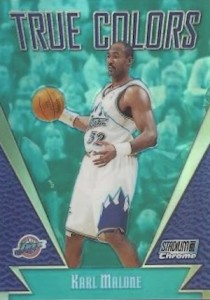
Just because Refractors have proven to be very popular does not mean collectors will blindly accept them in every product. Part of the Refractor charm stems from their annual inclusion in specific products. If every product had them, they would not as special.
One unsuccessful example that comes to mind is Stadium Club Chrome. This forgettable line was rolled out by Topps during 1998 and 1999 across football, baseball, basketball and hockey. Maybe it was the over-use of colors. Maybe it was because Stadium Club was already an established brand that was not involved with Refractors. In any event, collectors were not impressed. Although its short stint ended after 2000 Stadium Cub Chrome Baseball, it was given a brief return in 2007-08 Stadium Club Basketball. Chrome TSC ultimately returned under the main Stadium Club MLB banner.
Now that they are appearing in many Topps products, including the base-level Bowman, and with more colors and designs, we may be rapidly approaching the Refractor saturation point. Only time will tell if collectors will continue to accept more Refractor parallels or if the bubble will eventually burst. Collectors will push for more until they move on to something else. It is something that has happened with inserts, jersey cards and normal parallels. The key is knowing the limit and allowing the market to dictate the process. The added competition from Panini should help the overall Refractor product offering from both Topps and Panini. This, in turn, helps the average collector, and that is always a good thing.
 | Making purchases through affiliate links can earn the site a commission |
Refractor Hot List
Below is a real-time look at the 50 most-watched Refractors currently listed on eBay.
























